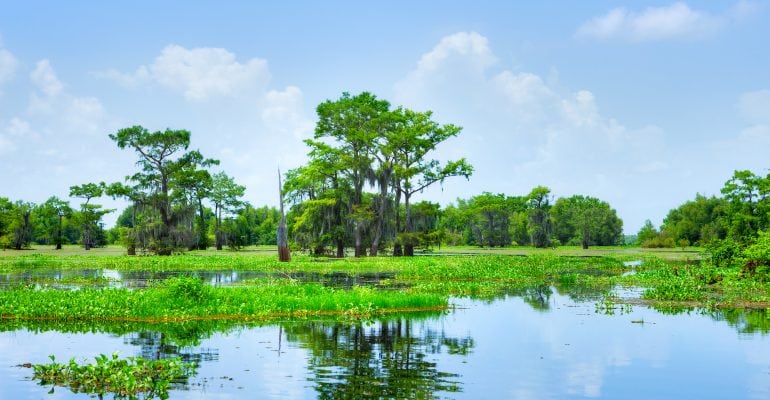The recent Louisiana high water events along with the opening of the Bonne Carre’ Spillway are having a noticeable effect on the state’s supply of oysters, shrimp, crab and finfish, according to preliminary assessments from the Louisiana Department of Wildlife and Fisheries (LDWF).
Preliminary results from monitoring of commercial harvest using data available as of June 6 show that for oysters on public water-bottoms, landings have declined by 80 percent from the average for the year-to-date and are 89 percent below the average for March-April.
Statewide shrimp landings (brown and white shrimp combined) declined by 36 percent for the month of March, and 63 percent for the month of April, when compared to the five-year average.
Statewide blue crab landings have decreased by 33 percent for the month of March, and 45 percent for the month of April when compared to the five-year average.
Concerning finfish, preliminary findings show that landings are down for black drum, 53 percent in the Vermilion-Tech basin and down 43 percent year-to-date in the Calcasieu basin, commercial black drum landings are down 31 percent year to date. Recreational harvest of red drum and spotted seatrout are also reduced compared to other recent years, as monitored by LA Creel.
LDWF personnel are also monitoring salinities as well as abundance of fish and shellfish in all the major estuaries of the coast.
(For more a complete list of findings, please view the LDWF preliminary report athttp://www.wlf.louisiana.gov/floodinfo)
LDWF biologists also continue to monitor the flooding impacts on fishery and wildlife resources resulting from the first and the recent second Bonne Carré Spillway openings order by the U.S. Army Corps of Engineers.
Since January, there has been an increase in sea turtle and marine mammal strandings along the coast of the state. LDWF continues to work with the federal government and other agencies in assessing the situation.
The true impact of the spillway opening and other high water events on fish and animals won’t be known for months as data continues to be collected and analyzed by both state and federal agencies.
The Louisiana Department of Wildlife and Fisheries is charged with managing and protecting Louisiana’s abundant natural resources. For more information, visit us atwww.wlf.la.gov. To receive LDWF email alerts, signup at http://www.wlf.la.gov/signup.





